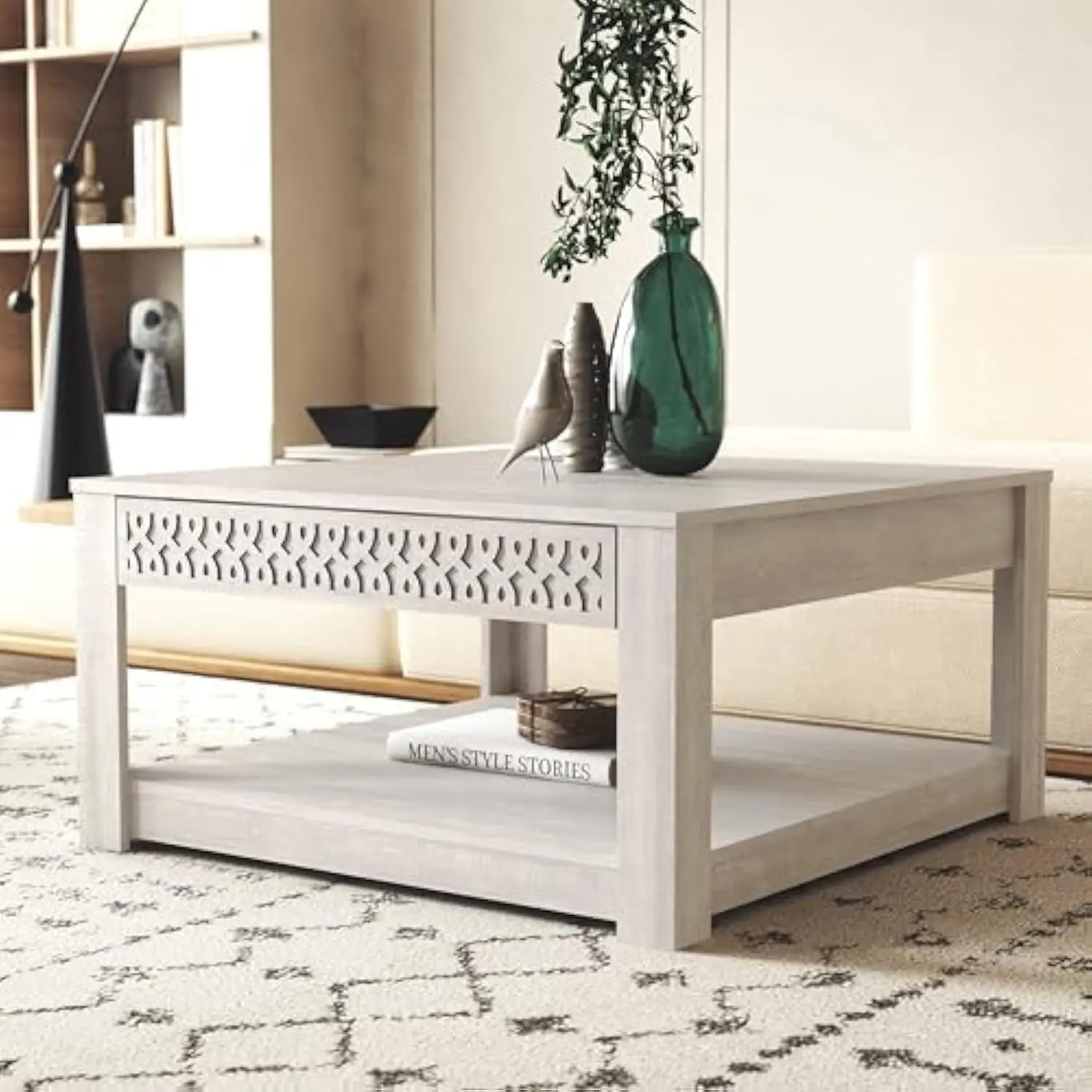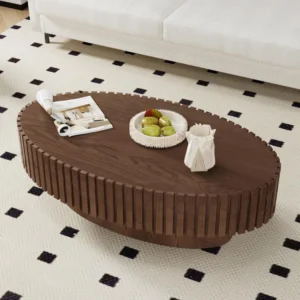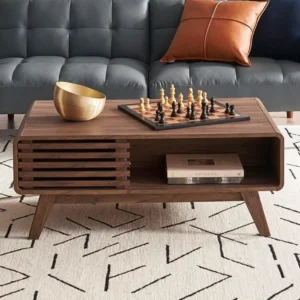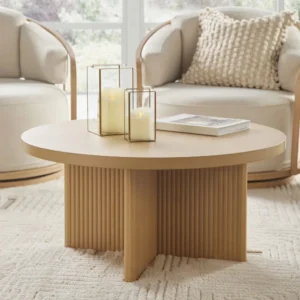Introduction: Why Choose Sustainable Wood for Your Table
In today’s environmentally conscious world, the materials we choose for our homes matter more than ever. When selecting a table – one of the most substantial pieces of furniture in most homes – the type of wood used makes a significant difference to our planet’s wellbeing.
Eco-friendly wood refers to materials that come from sustainable forestry practices, responsible harvesting methods, and renewable resources. Unlike conventional wood harvesting, which often leads to deforestation, habitat destruction, and biodiversity loss, sustainable practices ensure forests remain healthy and continue to thrive for generations to come.
Choosing eco-friendly wood for your table offers multiple benefits. Beyond the obvious environmental conservation aspects, these materials often contain fewer harmful chemicals, provide exceptional durability, and showcase unique aesthetic qualities that mass-produced furniture simply cannot match. According to recent research, the furniture industry generates millions of tons of waste annually, making sustainable choices increasingly important.
In this comprehensive guide, we’ll explore various sustainable wood options for tables, how to identify truly eco-friendly materials, and key factors to consider when making your selection. Whether you’re shopping for a dining table, coffee table, or side table, understanding intelligent black mid-century coffee tables and other sustainable options will help you make choices aligned with both your aesthetic preferences and environmental values.
What Makes Wood Eco-Friendly? Understanding Sustainability Criteria
Before diving into specific wood types, it’s important to understand what actually makes wood environmentally friendly. True sustainability encompasses multiple factors throughout the material’s entire lifecycle.
Key Sustainability Criteria
- Renewable Sourcing: How quickly can the wood be regrown compared to harvest rates? Trees with faster growth cycles generally have lower environmental impact.
- Harvesting Methods: Selective harvesting that preserves forest ecosystems is vastly preferable to clear-cutting, which destroys habitats.
- Forest Management: Sustainable forestry maintains biodiversity, protects watersheds, and ensures long-term forest health.
- Certification Standards: Look for credible third-party certifications like Forest Stewardship Council (FSC), which verifies responsible forest management.
- Processing Impact: Methods that use fewer chemicals, less energy, and create less waste are more sustainable.
- Transportation Footprint: Locally sourced wood generally has a lower carbon footprint than imported options.
Wood’s lifecycle assessment evaluates environmental impact from “cradle to grave” – from forest growth through manufacturing, use, and eventual disposal or recycling. Different woods have different profiles based on these criteria.
When choosing between hardwood vs softwood coffee tables, these sustainability factors should influence your decision alongside aesthetic and practical considerations. Hardwoods typically grow more slowly but may last longer, while softwoods grow faster but might need replacement sooner.
FSC certification represents the gold standard for sustainable forestry. This rigorous system ensures that certified forests are managed in ways that preserve biological diversity and benefit local communities while remaining economically viable. Additionally, sustainable forests serve as carbon sinks, actively helping to combat climate change.
Reclaimed Wood: Giving History New Life
Perhaps the most environmentally friendly wood option available today is reclaimed wood – material salvaged from old structures like barns, factories, warehouses, or even river bottoms where logs have been preserved for decades or centuries.
Environmental Benefits
Choosing reclaimed wood for your table offers multiple environmental advantages:
– Prevents usable material from entering landfills
– Eliminates the need to harvest new trees
– Reduces carbon footprint associated with new lumber production
– Preserves the embodied energy already invested in the original material
Beyond sustainability, reclaimed wood brings unmatched character to your home. Each piece tells a unique story through distinctive patina, nail holes, saw marks, and weathering patterns that cannot be authentically replicated in new materials. Many homeowners are drawn to aged wood vintage coffee tables precisely because of these distinctive characteristics.
The durability of reclaimed wood is often exceptional. Many salvaged pieces come from old-growth forests that contained trees with denser growth rings and stronger wood than today’s faster-grown timber. This translates to tables that can withstand generations of use.
While potentially more expensive than some newer options, reclaimed wood’s uniqueness and history often justify the investment. For those seeking distinctive character and authentic vintage appeal, exploring our collection of mid-century modern vintage coffee tables can provide inspiration for how these materials can be incorporated into contemporary designs.
The main challenges with reclaimed wood involve finding reliable sources and sometimes limited availability of specific dimensions. However, the environmental benefits and unique aesthetic qualities make it worth the extra effort for many homeowners.
FSC-Certified Hardwoods: Responsibly Harvested Beauty
For those who prefer the look and feel of traditional hardwoods but want to make environmentally responsible choices, FSC-certified options offer an excellent middle ground. The Forest Stewardship Council certification ensures that wood comes from forests managed according to strict environmental, social, and economic standards.
Comparison of Popular FSC-Certified Hardwoods
| Wood Type | Durability | Appearance | Sustainability Profile |
|---|---|---|---|
| Oak | Very high (Janka: 1290-1360) | Prominent grain, light to medium brown | Moderate growth rate, abundant in managed forests |
| Maple | High (Janka: 1450) | Fine grain, light color with subtle pattern | Good regrowth rate in North American forests |
| Walnut | Medium-high (Janka: 1010) | Rich dark brown with straight grain | Slower growth, requires careful management |
| Cherry | Medium (Janka: 950) | Reddish-brown that darkens with age | Moderate growth rate, valued for aging properties |
Oak stands out for its exceptional durability, making it ideal for dining tables and high-use surfaces. Its distinctive grain pattern adds visual interest while hiding minor scratches and marks. FSC-certified oak comes from forests where selective harvesting maintains the overall ecosystem health.
Maple provides excellent hardness and a cleaner, more uniform appearance that works well in contemporary designs. Its lighter tone brightens spaces and offers versatility in finishing options. Sustainable maple production focuses on maintaining healthy forest diversity.
Walnut remains prized for its rich, luxurious appearance. Though slightly softer than oak or maple, it still offers excellent durability for table applications. Because walnut grows more slowly, responsible harvesting is particularly important for its sustainability.
Cherry wood develops a distinctive patina over time, actually improving in appearance as it ages. This unique characteristic makes it particularly suitable for heirloom-quality pieces meant to last generations.
For those exploring options, our solid wood coffee tables collection features several FSC-certified hardwood options that combine sustainability with timeless appeal.
Bamboo: The Fast-Growing Alternative
Though technically a grass rather than wood, bamboo has revolutionized sustainable furniture materials. Its remarkable growth rate – capable of reaching maturity in just 3-5 years compared to decades for hardwoods – makes it one of the most rapidly renewable materials available.
Pros and Cons of Bamboo for Tables
Pros:
– Extremely fast growth rate (up to 91 cm/36 inches per day for some species)
– Requires minimal pesticides and fertilizers
– Strong root systems prevent soil erosion
– Comparable hardness to maple (Janka rating around 1380)
– Distinctive appearance with characteristic nodes
– Available in various colors and grain patterns through different processing methods
Cons:
– Often requires shipping from Asia, increasing carbon footprint
– Manufacturing process may use adhesives containing formaldehyde
– Sensitivity to humidity fluctuations can cause warping
– Limited dimensional stability compared to some hardwoods
– May scratch more easily than higher-density woods
Bamboo tables are manufactured using two primary methods: horizontal (showing the flat side of strips) and vertical (showing the narrow edge). Stranded bamboo, which shreds and recombines the material under high pressure, offers the greatest durability but requires more processing.
For homeowners seeking a contemporary aesthetic with environmental benefits, bamboo offers an appealing alternative to traditional woods. Understanding the full spectrum of wood options can help in making informed decisions, as detailed in our ultimate guide to solid wood coffee tables.
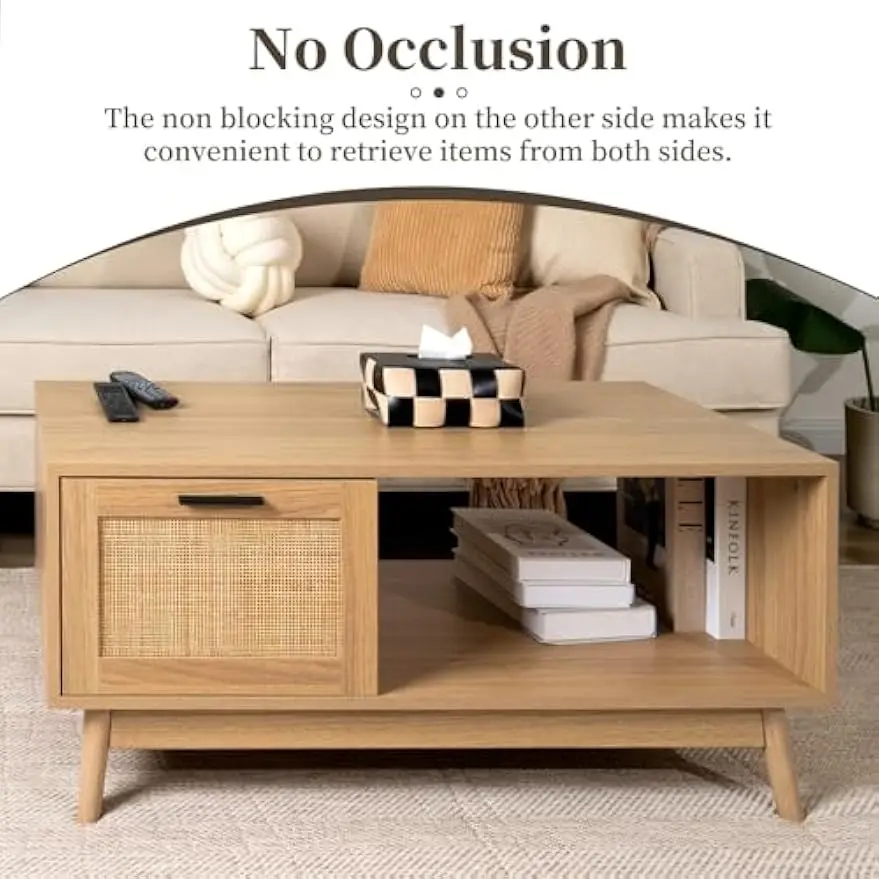
Rubberwood: The Plantation Byproduct
Rubberwood represents an innovative approach to sustainability as it gives new life to trees that have reached the end of their latex-producing years. After approximately 25-30 years of producing latex for rubber products, these trees traditionally were simply discarded or burned.
Today, rubberwood has become a valuable furniture material, offering genuine environmental benefits by utilizing what would otherwise be agricultural waste. This approach maximizes the utility of land already dedicated to rubber production without requiring additional forest conversion.
From a furniture standpoint, rubberwood offers medium density and strength comparable to some traditional hardwoods. It features a straight grain with a light color that easily accepts stains, making it adaptable to various design aesthetics. The material works well for tables, particularly in indoor settings.
One of rubberwood’s greatest advantages is its affordability. As essentially a byproduct of the rubber industry, it typically costs less than many hardwoods while still offering good durability and appearance. This makes sustainable furniture choices more accessible across different price points.
For homeowners looking to incorporate eco-friendly tables into their decor schemes, our guide to styling black mid-century coffee tables provides inspiration that works beautifully with rubberwood and other sustainable materials.
Mango Wood: Fruit Industry’s Sustainable Gift
Similar to rubberwood, mango wood represents another agricultural byproduct given new life through thoughtful repurposing. When mango trees stop producing fruit at commercially viable levels (typically after 15-20 years), they can be harvested for their beautiful wood rather than simply being discarded.
What sets mango wood apart is its extraordinary visual appeal. The wood displays stunning variation in color – from light golden hues to deep browns with occasional pink, green or purple streaks. This natural variation creates tables with unique character and visual interest that makes each piece one-of-a-kind.
Durability is another strong point for mango wood. It’s naturally dense and resistant to water, making it suitable for both dining and coffee tables. The material accepts finishes well and can be treated to enhance its longevity and beauty.
While not as widely available as some other options, mango wood’s growing popularity has increased its presence in the furniture market. Its unique aesthetic qualities make it particularly well-suited to statement pieces that showcase the wood’s natural beauty.
For those considering various wood options, comparing mango wood with traditional choices like those found in our walnut coffee tables collection can help identify the right material for your specific needs and preferences.
Beyond the Wood: Eco-Friendly Finishes and Adhesives
Even the most sustainably harvested wood can lose its environmental credentials if finished with toxic chemicals. To create a truly eco-friendly table, consideration must extend to finishes and adhesives as well.
Eco-Friendly Finish Options
Natural Oils:
– Linseed oil: Derived from flax seeds, provides a warm, hand-rubbed appearance
– Tung oil: From tung tree nuts, creates a more water-resistant finish
– Walnut oil: Naturally drying oil that enhances wood’s natural color
Water-Based Products:
– Water-based polyurethanes: Offer durability with significantly lower VOCs
– Acrylic finishes: Provide good protection with minimal toxicity
Waxes and Hybrids:
– Hard wax oils: Combine natural oils with waxes for enhanced protection
– Beeswax: Creates a soft luster with natural water resistance
– Carnauba wax: Plant-derived wax with excellent hardness
The importance of these choices extends beyond environmental impact to directly affect your home’s indoor air quality. Traditional solvent-based finishes can off-gas volatile organic compounds (VOCs) for years, potentially causing respiratory irritation and other health concerns.
Similarly, construction methods matter. Many conventional tables use adhesives containing formaldehyde and other harmful chemicals. Look for furniture constructed with formaldehyde-free glues, mechanical joinery techniques, or traditional woodworking methods that minimize chemical use.
Understanding these considerations helps ensure your sustainable choice remains environmentally sound throughout its lifecycle. Our guide to common wood finishes for coffee tables provides additional details on these options.
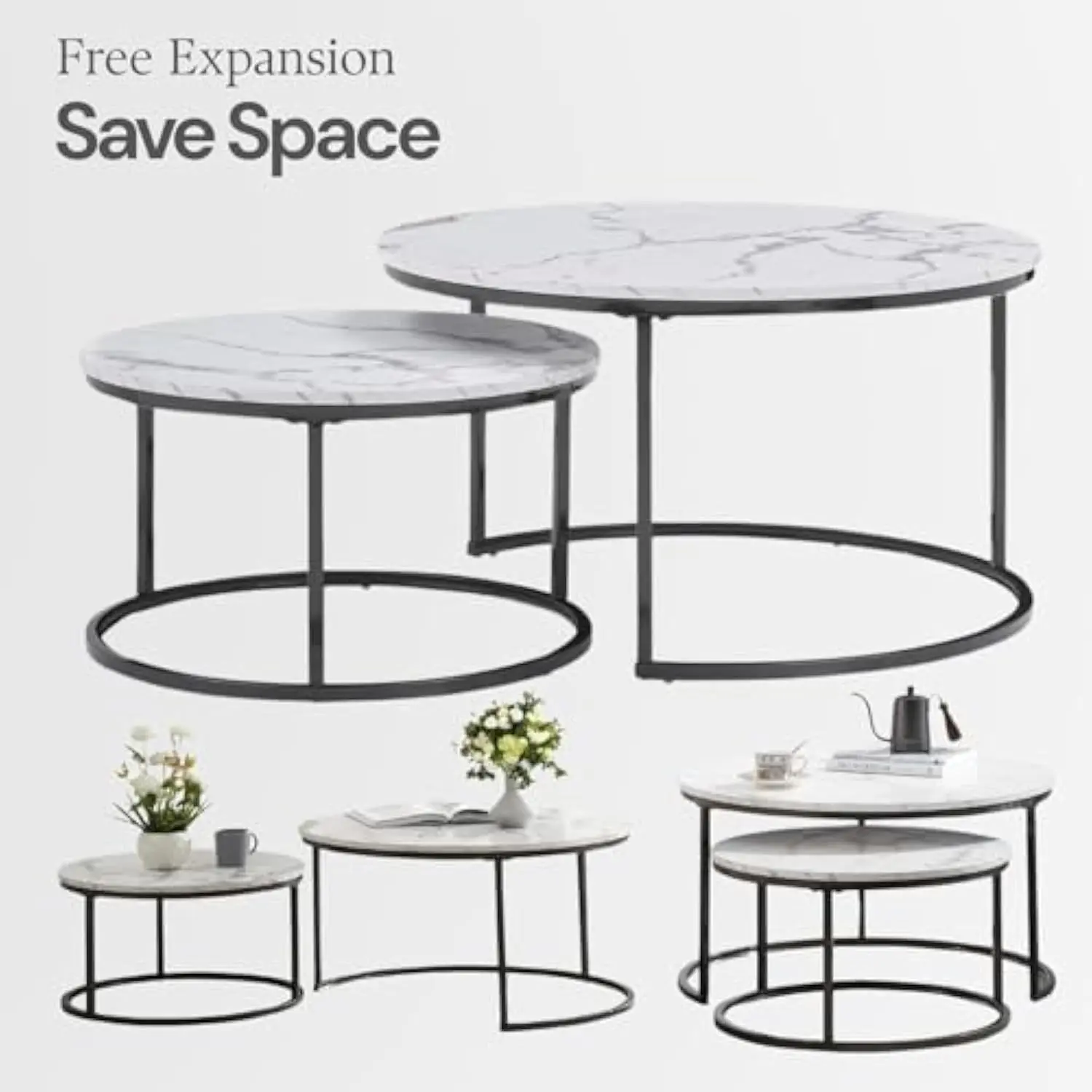
Selecting the Right Eco-Friendly Wood for Your Needs
With so many sustainable options available, how do you determine which is best for your specific situation? The answer depends on balancing several key factors.
Usage Requirements
Consider how the table will be used in your home. A dining table endures different stresses than a coffee table or occasional table. For high-use surfaces like dining tables, harder woods like oak or maple may better withstand daily wear. Coffee tables might allow more flexibility with materials like bamboo or mango wood.
Households with young children might prioritize durability and resistance to scratches and stains, while adults-only households might place greater emphasis on aesthetic qualities.
Aesthetic Preferences
Each sustainable wood option brings distinct visual characteristics. Reclaimed wood offers rustic charm with historical context. FSC-certified hardwoods provide traditional elegance. Bamboo brings contemporary clean lines. Mango wood delivers exotic grain patterns.
Consider how these different appearances will complement your existing décor and personal style preferences. The perfect sustainable table should satisfy both environmental and aesthetic requirements.
Budget Considerations
Eco-friendly options exist across various price points. Reclaimed wood typically commands premium prices due to processing requirements and unique character. FSC-certified hardwoods generally fall into the mid-to-high range. Rubberwood often represents a more budget-friendly choice without sacrificing sustainability.
Determine your investment threshold while recognizing that higher-quality sustainable pieces often offer greater longevity, potentially providing better long-term value despite higher initial costs.
For more detailed guidance on selecting the perfect table, our article on essential features of solid wood coffee tables provides valuable insights applicable to various table types.
Where to Find Eco-Friendly Tables and Materials
Finding genuinely sustainable wood furniture requires knowing where to look and what questions to ask. Here are some reliable sources:
Retail Options
Specialized eco-furniture retailers focus exclusively on sustainable options, though general furniture stores increasingly offer certified sustainable choices as well. Online marketplaces dedicated to sustainable or artisanal products can provide access to small-batch producers committed to environmental responsibility.
Custom Furniture Makers
Local craftspeople and custom furniture studios often work with sustainable materials and may offer options like locally harvested woods that minimize transportation impacts. Many are deeply knowledgeable about sourcing truly sustainable materials.
DIY Sources
For those interested in creating their own pieces, architectural salvage yards, demolition companies, and specialized reclaimed wood dealers offer materials with unique character and history. Lumber suppliers increasingly stock FSC-certified options as well.
When shopping, don’t hesitate to ask detailed questions about sourcing, certification, and production methods. Legitimate sustainable products should come with transparent information about their origins and environmental credentials.
For beautiful examples of sustainably crafted tables, browse our teak coffee tables collection, featuring pieces made from carefully managed sources.
Mid-Century Modern Solid Wood Coffee Tables, Mid-Century Modern Teak Coffee Tables
$879.95 Select options This product has multiple variants. The options may be chosen on the product pageMid-Century Modern Danish Coffee Tables, Mid-Century Modern Oval Coffee Tables, Mid-Century Modern Solid Wood Coffee Tables
$390.05 Select options This product has multiple variants. The options may be chosen on the product pageMid-Century Modern Glass Top Coffee Tables, Mid-Century Modern Vintage Coffee Tables, Mid-Century Modern Vintage Side & End Tables
$725.36 Select options This product has multiple variants. The options may be chosen on the product pageMid-Century Modern Oval Coffee Tables, Mid-Century Modern Solid Wood Coffee Tables
$679.56 Select options This product has multiple variants. The options may be chosen on the product pageMid-Century Modern Solid Wood Coffee Tables, Mid-Century Modern Walnut Coffee Tables
$501.53 Select options This product has multiple variants. The options may be chosen on the product pageMid-Century Modern Round Coffee Tables, Mid-Century Modern Solid Wood Coffee Tables
Price range: $522.31 through $559.78 Select options This product has multiple variants. The options may be chosen on the product page
Caring for Your Eco-Friendly Wood Table: Maintenance Tips
Proper care extends the life of your sustainable table, maximizing its environmental benefits by delaying replacement needs. Different wood types require specific approaches to maintenance.
For most eco-friendly wood tables, regular dusting with a soft, slightly damp cloth prevents buildup that can scratch surfaces. Avoid harsh chemical cleaners in favor of gentle, natural alternatives – a mixture of equal parts white vinegar and olive oil makes an effective wood cleaner and conditioner for most finishes.
Protect surfaces from heat and moisture with coasters, placemats, and trivets. Immediately wipe up spills, particularly on tables finished with natural oils or waxes which may offer less water resistance than polyurethane finishes.
Periodically reapplying the appropriate finish maintains protection and appearance. Tables finished with natural oils may need refreshing every 6-12 months, while hard wax oils and water-based polyurethanes typically last longer between applications.
For more specific care instructions related to different wood types and finishes, our guide on how to identify real wood coffee tables provides valuable information on recognizing materials and their maintenance requirements.
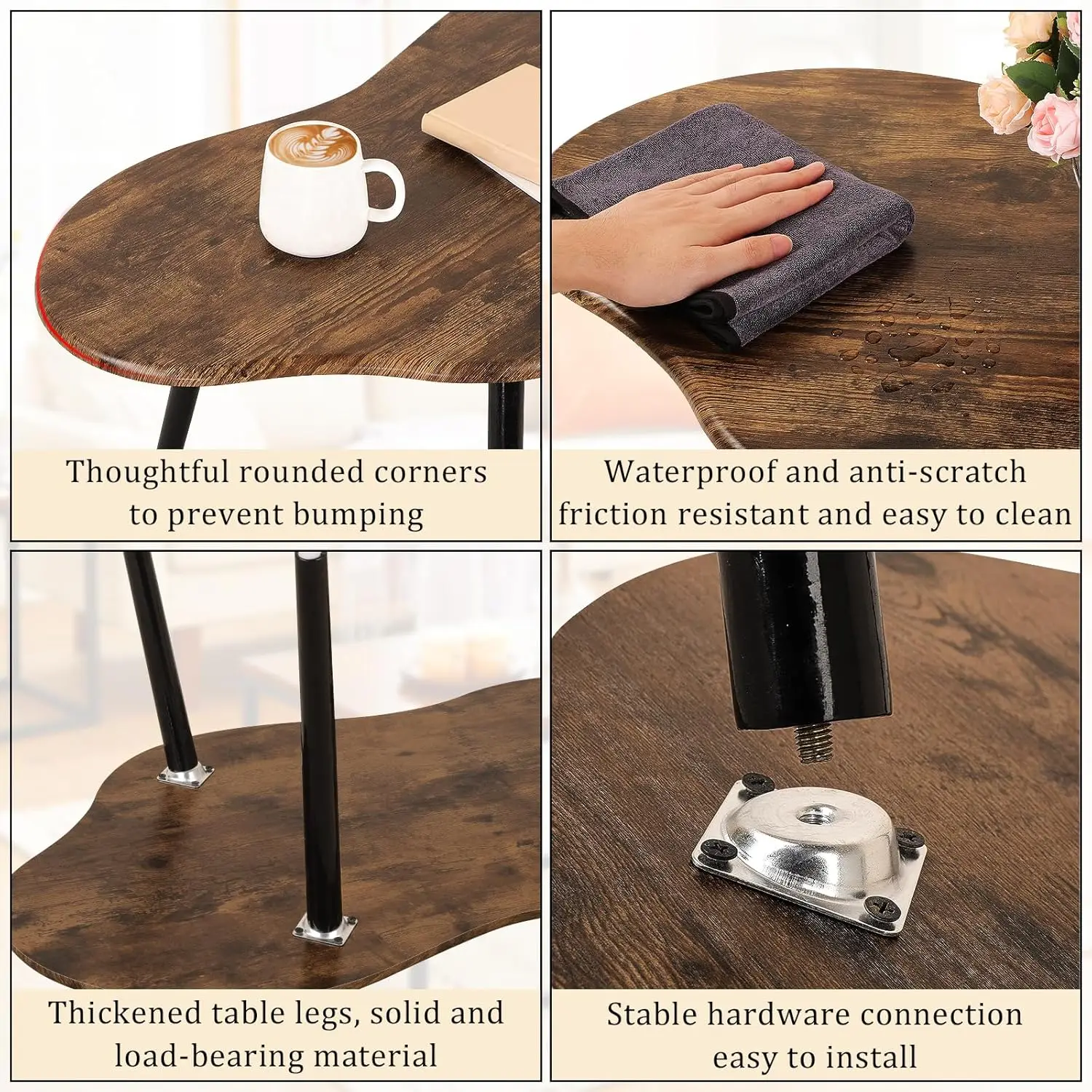
Common Questions About Eco-Friendly Wood Tables
Is bamboo really better for the environment than hardwood?
The answer depends on several factors. Bamboo’s rapid growth rate makes it highly renewable, but transportation distance and manufacturing processes can offset some benefits. Locally sourced FSC-certified hardwood might have a lower overall carbon footprint than bamboo shipped from Asia. Both can be sustainable choices when properly sourced.
How can I verify reclaimed wood is legitimate?
Reputable sellers provide documentation about the wood’s origin, including information about the original structure, approximate age, and reclamation process. Visual indicators include nail holes, saw marks, weathering patterns, and signs of previous use that are difficult to artificially replicate. When in doubt, ask for detailed provenance information.
Do eco-friendly tables cost more than conventional ones?
They sometimes do carry premium prices, particularly for reclaimed or certified woods. However, rubberwood and some bamboo options can be quite affordable. Additionally, the durability of quality sustainable pieces often means better long-term value despite higher initial investment.
Can eco-friendly wood tables be as durable as traditional options?
Absolutely. Many sustainable woods match or exceed the durability of conventionally sourced alternatives. Reclaimed old-growth lumber often features density and stability rarely found in newer wood. FSC-certified hardwoods maintain the same physical properties as uncertified versions of the same species.
For inspiration on incorporating these sustainable pieces into your home decor, explore creative ideas for decorating black mid-century coffee tables that can be adapted for tables of various sustainable materials.
At Hearth Forms, we believe beautiful design and environmental responsibility can go hand-in-hand. By selecting eco-friendly wood for your table, you’re not just making a design statement – you’re making a choice that benefits our planet while bringing natural beauty into your home for years to come.

